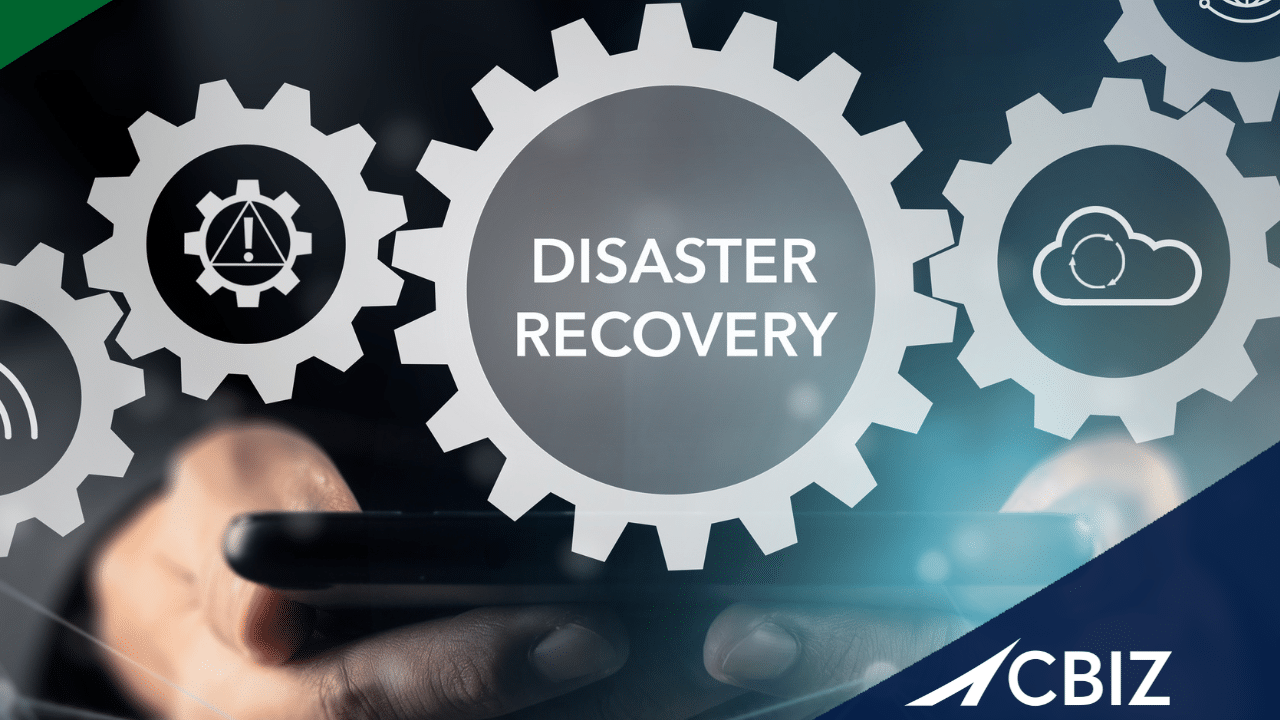
As we head into National Preparedness Month this September – a month that highlights the importance of planning for unexpected events – it creates an opportunity for small and medium-sized businesses (SMBs) to evaluate and strengthen their disaster recovery (DR) plans. Disaster Recovery plans outline how a business can restore access and functionality after a disaster or prolonged unexpected downtime. DR plans cover a range of incidents, from natural disasters like fires and floods to cyber threats, hardware failures, and human errors.
The time to prepare is before a crisis strikes, not during one. DR plans require careful planning, coordination across departments, and thorough testing to ensure effectiveness. It is important to understand the specific needs of your business and its tolerance for downtime as those will dictate how and when you implement a DR plan. When well-crafted, these plans clearly define the necessary steps, roles, and procedures minimize downtime and ensure a swift recovery from any disruption.
In this blog, we will explore why a DR plan is vital for SMBs and discuss key considerations for creating an effective DR strategy.
Why is a DR Plan Necessary?
For SMBs, a robust DR plan is not just a safety net—it’s essential for survival. Even brief periods of downtime can lead to severe financial consequences and, in the worst cases, irrevocable damage to the business. Additionally, industry, insurance, and/or regulatory standards may mandate having a DR plan in place.
What Constitutes a DR Plan?
A comprehensive DR plan should identify a wide range of potential scenarios, each requiring a specific response. For example, the recovery process after a fire will differ significantly from that following a ransomware attack. It is imperative that the creation of this plan includes a communication tree to ensure its effectiveness during a scenario.
How Long Can Your Company Be Without Technology?
Every company has different thresholds for acceptable downtime. Forming a “DR Committee” can help identify risks and assess the impact of disruptions on various departments. Understanding each department’s needs and what they can and can’t operate without is crucial for developing a successful plan.
In addition to understanding departmental needs, it’s essential to establish clear time objectives for your DR plan.
Recovery Time Objective (RTO): This is the maximum acceptable amount of time your business can be without technology before it severely impacts operations. For example, if your RTO is 4 hours, your plan should aim to restore all necessary systems and data within that timeframe.
Recovery Point Objective (RPO): This defines the acceptable amount of data loss measured in time. For instance, if your business can only tolerate losing 1 hour of data, your backup strategy may need to include hourly backups. If the data you’re restoring is several hours or days old, and that’s unacceptable for your business, you’ll need to adjust your RPO accordingly.
Who Oversees and Tests the Plan?
It is common that a designated senior management team member is responsible for overseeing the DR plan, including its creation and testing. While this person may not execute the plan during a disaster, they should have the authority to initiate the DR process when needed. Their deep understanding of the plan and decision-making ability ensure that the DR strategy is activated promptly and effectively.
Regularly Test Your Plan
Creating a DR plan is just the start—regular testing is essential for ensuring its effectiveness. Routine testing allows team members to practice their roles and gain confidence in the process. Testing identifies gaps or weaknesses in the plan, allowing adjustments before a real crisis occurs.
Strengthen Your DR Plan with CBIZ CompuData
If your business currently lacks a DR plan or if your existing plan needs refinement, CBIZ CompuData is here to provide expert support. Our team specializes in creating comprehensive, tailored DR strategies designed to fit your unique business needs and ensure resilience against any disruption.
To learn more about how CBIZ CompuData can help improve your disaster recovery strategy and protect your business, email us.


